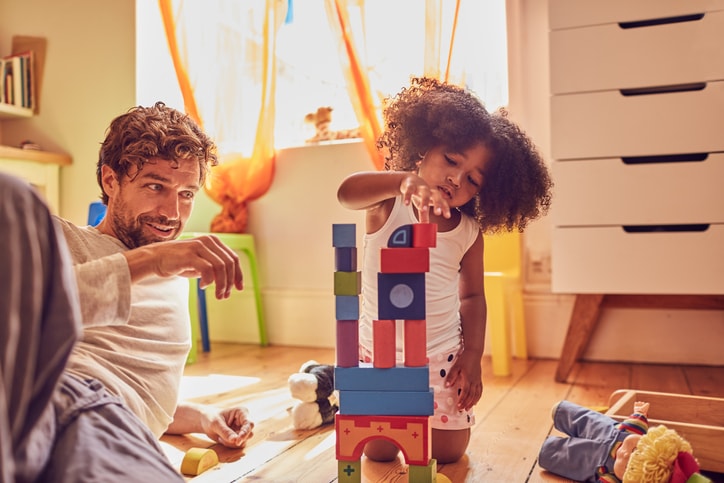When we think about kids learning math, we often imagine an elementary school classroom full of children doing worksheets. But children can learn math in so many other ways — and it is never too early to start learning math fundamentals. These math activities for preschoolers don’t have to be complicated and can often be done with things you already have around the house.
Emma Armstrong-Carter, a developmental psychologist and post-doctoral researcher at UNC Chapel Hill, says that in preschool, “children are not typically formally learning math — but they may be learning how to count, learning vocabulary and exploring their environment and demonstrating curiosity in how things work.” There are many activities we might not think of as teaching math that may actually be building math skills for children. As Armstrong-Carter explains, “These skills and behaviors can serve as a foundation for later math skills that emerge with more formal teaching.”
The following math activities for preschoolers — collected from preschool teachers, parents, social media and my own experience working with preschool-aged children — can help you reimagine everyday activities and play into simple math lessons. Try one or all of these fun pre-k math activities with little ones in your care.
1. Counting with Unifix cubes
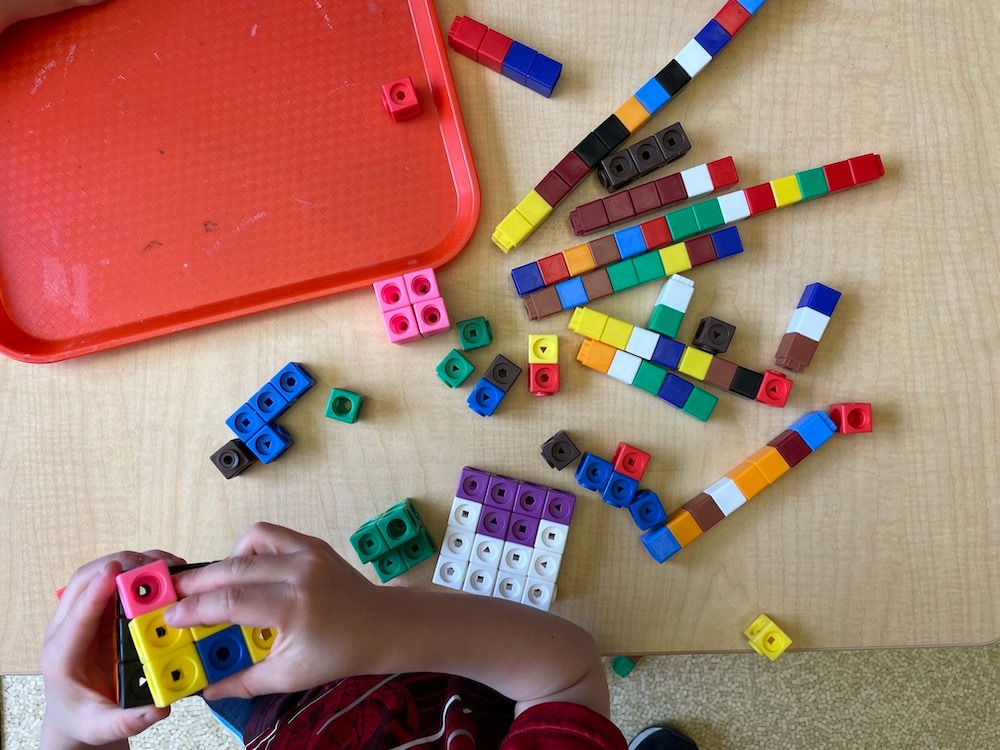
Unifix cubes are great for kids learning how to count and basic math. As kids start stacking the cubes, ask them how many cubes they have and help them count if they don’t know how. A 4-year-old I work with loves playing with Unifix cubes and teaches himself math through playing with the cubes. It started with just stacking a single tower, and now he’s creating three-dimensional shapes and counting how many wide, how many tall, and how many total … which is a great basic understanding of multiplication!
In addition to counting, the cubes come in different colors, which allows children to sort and categorize by color or create patterns, which are both important math skills.
Where to buy: Didax Unifix Cubes Set ($15 for 100-pack, Amazon)
2. Learning numbers on a calendar

Calendars are great for helping children visualize numbers in order. In the classroom I work in, the teachers print out simple calendars and have the kids trace each number and circle important days, like holidays or birthdays. This allows them to practice recognizing and writing numbers. Another tip is to have them color and decorate it to make this simple math activity more fun.
3. Counting trains
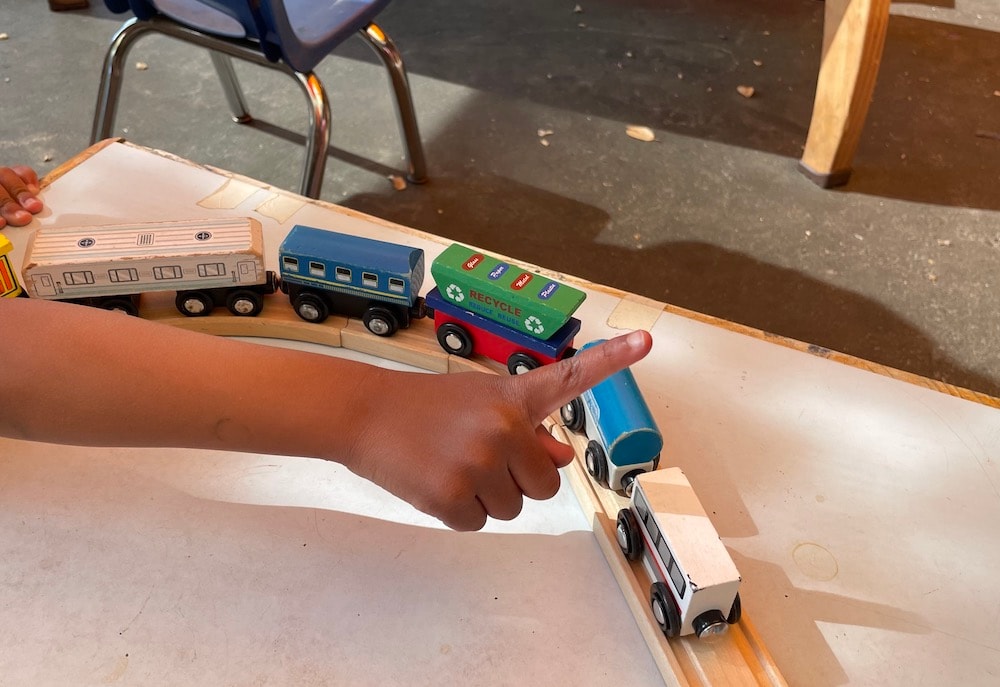
Sometimes kids won’t want to engage in an activity that’s presented as a math or counting activity. But many kids love playing with trains! When playing trains with preschoolers, I sometimes ask them to count how many trains they have, or have a contest of who can make the longest train line. They don’t need to stop what they’re doing completely, but see if you can work a counting game into what they’re already playing. This might seem too simple, but Armstrong Carter points out that when it comes to teaching math to 3 to 5-year-olds, it’s “more about basic numbers, colors, shapes and sizes, and learning to observe and describe the environment.”
4. Calculating while cooking
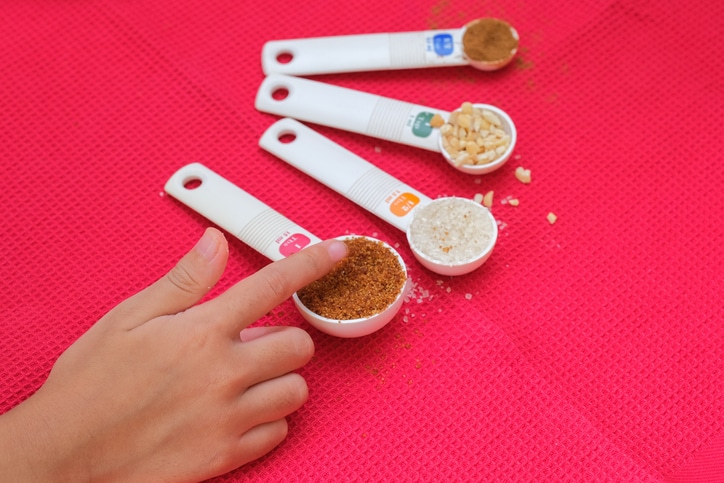
The kitchen can be a great place to learn basic math skills. According to Sally Macaluso, a special education preschool teacher who runs the educational blog Tenderhearted Teacher, “Asking our children to help out in the kitchen with meal preparation is a great way to have them learn about counting, measurement, quantities, volume and sequencing.” Next time you’re cooking or baking for a preschooler, invite them to help you out — they might pick up some math skills in the process.
5. Counting and comparing with UNO cards
This game idea from Amy Nielson, founder of Planning Playtime (@PlanningPlaytime on TikTok) uses two things you might already have: colored blocks and the card game, UNO. Spread out some UNO cards and have the child stack blocks or cubes (Unifix cubes work great for this!) on each card according to the number and color on the card. For example, if the card was a blue five, the child would stack five blue cubes or blocks and place them on the card. As Nielson explains in her TikTok, this game teaches “counting, one-to-one correspondence, and comparing numbers.”
Where to buy: UNO Card Game ($6, Target)
6. Learning shapes with magnet tile puzzle
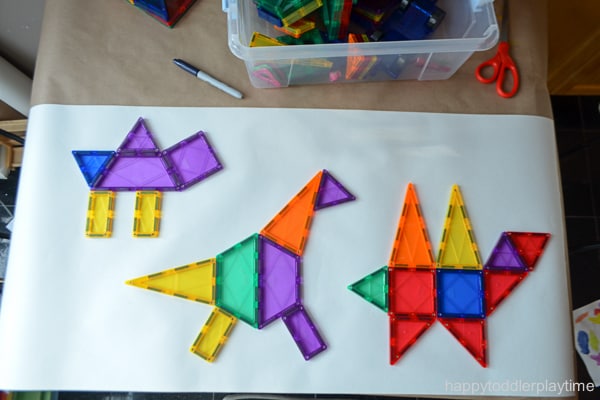
If you know kids, you know that kids LOVE magnet tiles. Any type of play with magnet tiles is great for developing a basic understanding of shapes and geometry, but you can shake things up by using this magnetic dinosaur tile puzzle template idea from Mandisa Watts at Happy Toddler Playtime. Simply use magnet tiles to map out the shape of a dinosaur (or anything really!) on a large piece of paper and trace the individual shapes. Then tape the “template” on the fridge, give the kids the magnet tiles, and ask them to find the tiles that fit each spot.
Where to buy: Connetix Tiles Mini Pack ($35 for 24-piece set, Why + Whale)
Read more:
7. Counting and walking game

Another way to work math into an everyday activity is to take advantage of a neighborhood walk. Before you start your walk, decide on something together that you’ll count on the walk. For example, you can count how many blue cars you walk by or how many dogs you see. They won’t think of it as an academic activity, but it’ll encourage skills like counting, sorting and patterns. And it might make a routine walk more fun!
8. Brain building with blocks
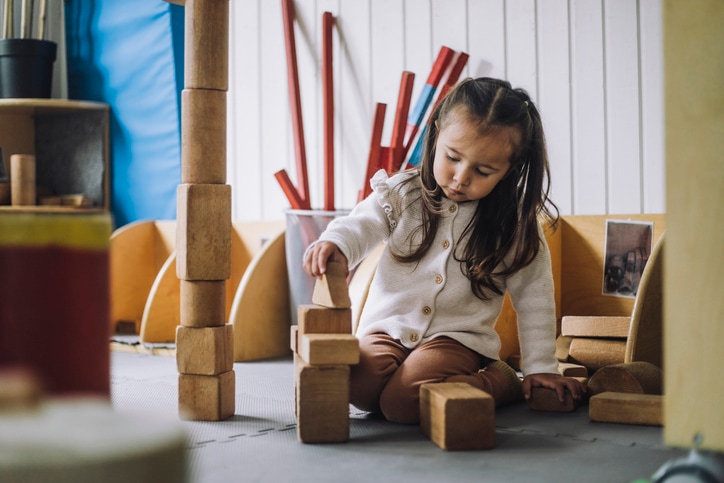
Blocks are a classic kids toy and probably something most preschoolers have in their toy box. Sally Macaluso says blocks are one of her favorite ways of teaching early math skills. “Blocks can be used for all sorts of math activities like counting, sorting, measurement, exploring spatial relationships and much more,” says Macaluso. Even without a structured activity, children can naturally learn math concepts through playing with blocks.
9. Subtraction smash
This activity from Jess, a veteran preschool teacher (@preschoolvibes on TikTok), is a great introduction to subtraction that uses one of children’s favorite items: play dough. Line up five balls of play dough and have the child count how many there are total. Then have them “smash” two balls by using their hands to flatten them. Ask how many Play-Doh balls are left, and this will start an early understanding of subtraction.
10. Graphing with Post-it notes
Teaching kids to graph something really simple — like colors and sizes — can help make learning to graph numbers later in life much easier. And this Post-it graphing activity from Emily (aka @sandboxacademy on TikTok) is the perfect place to start. On a large piece of paper, draw three vertical lines to create four columns. Label each column with a color, and place sticky notes that match those four colors around the graph. Then have the child categorize the sticky notes by color, creating a simple graph. You can do this on the floor, a table or even tape it to the wall like Emily shares in the video.
11. Building a city with early math
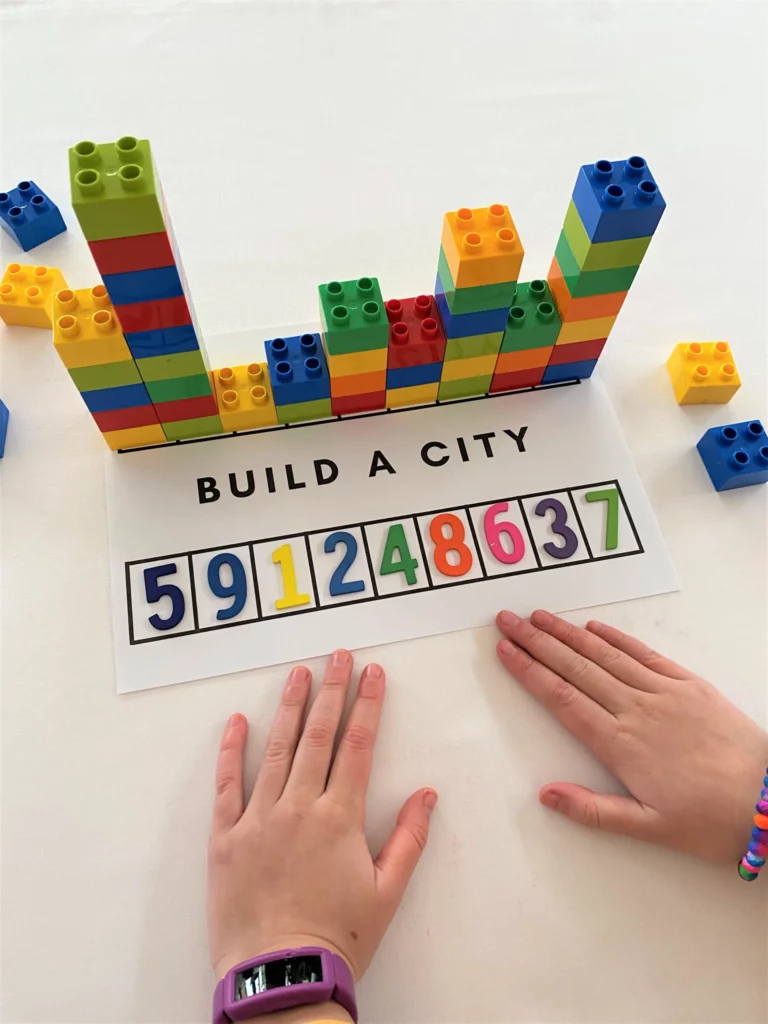
This math activity from Jacinta at Cinta + Co. uses Duplos to create a city skyline. Draw an outline and numbers on a piece of paper (or download and print out the free template) and have the child build towers corresponding to each number. At the end, it’ll look like a whole city! You can make as many versions of this as you want by changing the numbers around.
12. Size sorting with Big or Small?
Math doesn’t just have to be about numbers. Being able to categorize items by size can develop a sense of comparison that will be important throughout a child’s math education. Laynah (@laynahrose on TikTok) shares a fun way of practicing this skill with a simple “Big or Small?” sorting activity. Draw a big circle and a smaller circle on a large piece of paper and label them “Big” and “Small.” Then grab some toys and household items of varying sizes and put them around the paper. Let the child sort each item into the appropriate category. Mix this activity up by adding sorting by shapes or colors. Or, make it a little more complex by adding in a “Medium” category, too.
